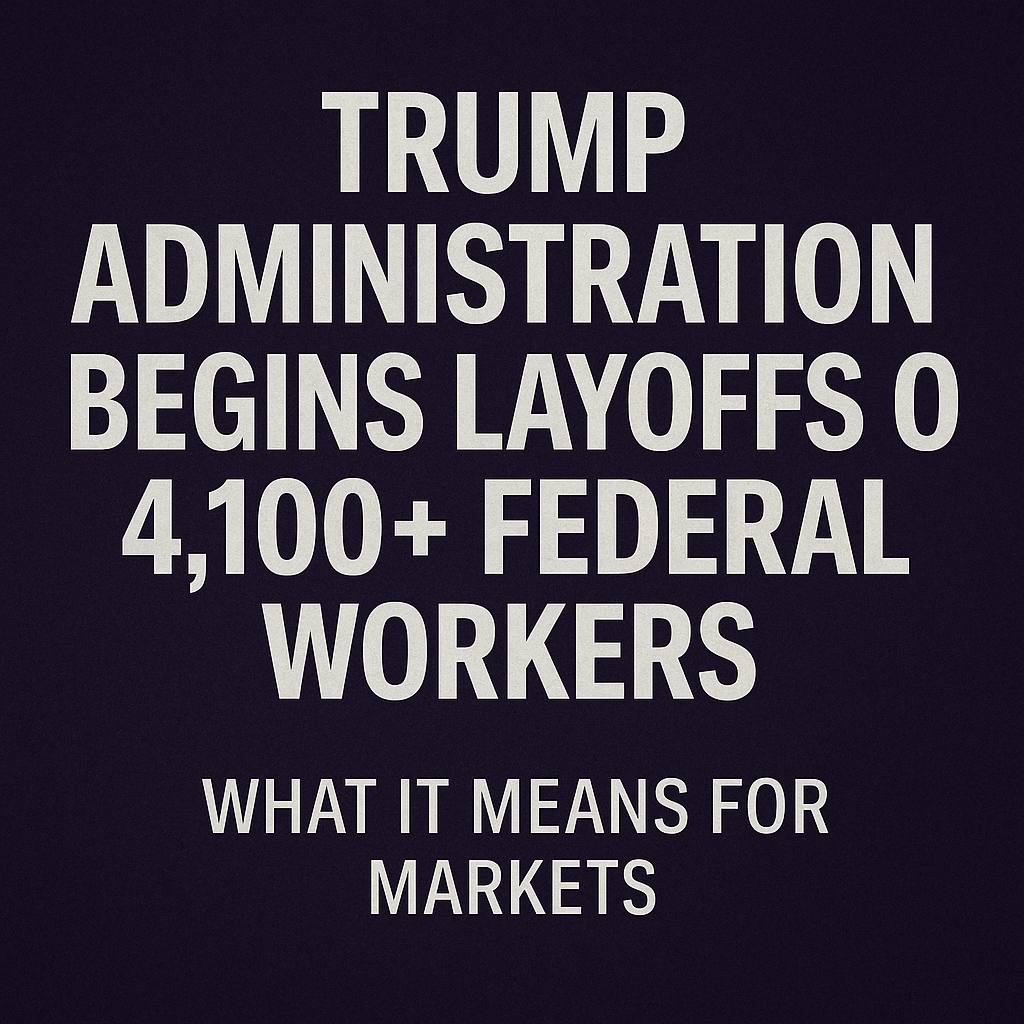
Washington, D.C. — In a dramatic escalation of the current U.S. government shutdown, the Trump administration has rolled out permanent reductions in force (RIF) affecting at least 4,100 federal employees across numerous agencies. The cuts arrive amid a standoff in Congress over funding, and they could ripple beyond the public sector — potentially influencing markets and investor sentiment in the weeks ahead.
Layoffs: Scope and Legal Challenges
According to a court filing, RIF notices have been or will be sent to about 1,100–1,200 staff at Health and Human Services, 1,446 at the Treasury Department, 466 at Education, along with hundreds in Commerce, HUD, Energy, Homeland Security, and the EPA.
The administration describes the figures as fluid and subject to revision.
OMB Director Russell Vought confirmed on social media that the “RIFs have begun.”
The American Federation of Government Employees (AFGE) has filed suit to block the terminations, arguing that executing permanent firings during a funding lapse violates federal employee protections and potentially the Antideficiency Act.
Legal experts note that using a shutdown as pretext for permanent cuts ventures into gray territory, as prior administrations have typically relied on furloughs, not dismissals, during funding lapses.
Broader Economic Implications
While the layoffs directly affect only a small share of the overall U.S. labor force, they carry broader implications that could affect growth, sentiment, and financial markets:
Reduced consumer spending: Those workers losing income will cut back on consumption, particularly in local economies near federal hubs (Washington, D.C. and suburbs). If sustained, that drag on demand could ripple into sectors reliant on discretionary spending. Nasdaq+1
Upward pressure on unemployment: As laid-off federal workers seek new jobs, aggregate unemployment could tick higher, especially if many cannot immediately transition to the private sector. Seeking Alpha+1
Slower economic growth: Government downsizing means less federal spending, potentially tightening aggregate demand. In a fragile or slowing economy, that tightening could exacerbate weakness. Nasdaq+2Investopedia+2
Structural changes: Some analysts argue the administration is paving the way for greater privatization and automation of services, shifting responsibility away from federal staff toward contractors or tech platforms. Brookings
However, many economists view the immediate macro effects as modest. Santander’s Stephen Stanley suggests that while federal payrolls might be “5,000 to 10,000 weaker per month,” the broader economy may absorb that loss without crisis. Barron’s
Market Impacts: Stocks & Crypto
The uncertainty created by these layoffs, combined with the shutdown, is a meaningful risk for financial markets — particularly equities and digital assets. Here’s how different segments could be affected:
U.S. Equity Markets
Volatility and cautious sentiment: Investors hate uncertainty, and political or fiscal gridlock often stokes volatility. If market participants fear deeper economic weakness ahead, risk assets may suffer.
Sector-specific effects: Companies that depend on government contracts — aerospace, defense, IT services, infrastructure — could see revenue disruption. Conversely, firms in consumer staples or defensive sectors might hold up better.
Layoff signaling: Historically, large-scale layoff announcements are often interpreted by markets as a sign of weakness, particularly if they arise during periods of economic fragility. ScienceDirect
Delays in IPOs and regulatory filings: The shutdown has already disrupted SEC operations. New IPOs and financial product approvals are being delayed, which could further lower market momentum. AP News
Cryptocurrency / Digital Assets
For those interested in crypto, this is a complex moment:
Safe-haven demand: In times of macro uncertainty, cryptocurrencies like Bitcoin are often seen as non-sovereign, “hedge-like” assets. Indeed, Bitcoin recently touched new highs amid shutdown fears, as investors sought alternatives to fiat. Barron’s+1
Regulatory delays: Many crypto-related initiatives — especially ETF approvals or SEC rulemaking — are halted or delayed because the SEC is operating with limited staff during the shutdown. That stalls market developments. MarketWatch
Increased volatility: Cryptos are inherently volatile, and layered atop political risk and fiscal uncertainty, price swings may intensify.
Correlation dynamics: If risk aversion dominates, crypto could correlate more with equities (falling together). But if the narrative shifts to currency devaluation, crypto might decouple and rise as an inflation hedge.
What Could Happen, and What to Watch
Short-term pullbacks: As uncertainty solidifies, markets could experience corrections. A negative surprise (e.g. economic data turning weak) might amplify declines.
Rotation to safe assets: Treasuries, gold, and high-quality fixed income could benefit as capital flees more speculative holdings.
Policy response matters: If Congress or the administration relents and ends the shutdown, or courts block the layoffs, confidence could rebound sharply.
Fed sensitivity: If economic weakness shows up in data, the Federal Reserve might feel pressure to ease or cut rates — a tailwind for risk assets. Reuters+1
Crypto bounceback potential: Once regulatory processes resume (e.g. ETF approvals), pent-up demand might push crypto markets higher.
